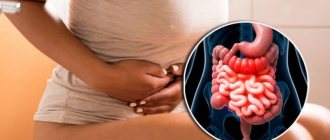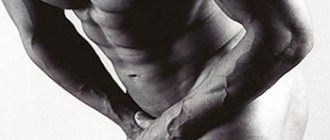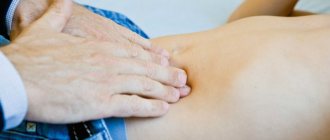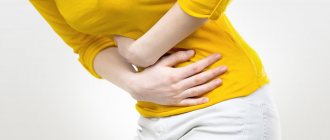February 8, 2021
Pain syndrome is the body’s signal about a pathological process. Abuse of painkillers is not the best solution to the problem. Examination and consultation with a specialist will prevent the development of serious complications.
Pain in the lower abdomen in a man is a symptom of various diseases. These include urological, oncological, neurological pathologies, and disorders of the reproductive system. For qualified help, you can contact the Dr. Medical Center. AkNer. Experienced specialists work here who have all the necessary equipment for diagnosis and treatment.
Discomfort in the navel area
Discomfort may be a symptom of the following pathologies.
- Inflammation of the appendix. If the condition is accompanied by fever, nausea and loose stools, you should immediately consult a doctor.
- Stomach ulcer or gastritis. The pain is burning in nature, accompanied by belching, indigestion, nausea and vomiting. If there is blood in the vomit or the stool is black, this indicates internal bleeding and requires urgent medical attention.
Diagnostics
It is difficult to make a diagnosis based on pain symptoms. Most often, the onset of pain is associated with eating, sexual intercourse, hypothermia or urination. If painful sensations appear after eating, there may be problems with the digestive system or intestines. After sexual intercourse - inflammation of the seminal vesicles or chronic prostatitis. An increase in temperature indicates the presence of an infection. If you press on a sore spot and a sharp pain occurs, there are problems with blood vessels, an abscess. Next, it is necessary to send the patient for an ultrasound or MRI to visualize each organ.
Upon admission, the patient is immediately given blood and urine tests. In case of intestinal disorders, stool is collected to be examined for infection.
Conversation with the patient is of great importance. A person knows better when he begins to experience pain and his opinion is important to the doctor.
In some cases, there is no time left for diagnosis - this is an acute attack of appendicitis or a splenic infarction, as well as intestinal ischemia, when every minute is precious, because a section of an organ without oxygen and blood will begin to die.
Discomfort in the suprapubic area
Pain in the lower abdomen in the center in men can be a symptom of diseases in the urinary tract and bladder. The intensity of the sensations is low, but urination is accompanied by burning and spasms. Blood in the urine, nausea and general intoxication may occur. Cystitis and bladder stones give this picture. Both conditions require seeing a doctor and prescribing adequate therapy.
Exacerbation of prostatitis also manifests itself as discomfort in the lower abdomen. The pain may increase with miction or ejaculation. There are acute prostatitis caused by a bacterial infection and chronic. Both conditions require the participation of a urologist.
The cause of pain in the lower abdomen in a man can be an infectious process or inflammation of the testicles. The condition is triggered by injury or sexually transmitted diseases. If, in addition to pain, compaction in the testicles, discharge from the penis, or changes in the skin are observed, an urgent consultation with a doctor is needed.
Pain and heaviness in the left hypochondrium
Gastritis
Ulcer
29466 May 27
IMPORTANT!
The information in this section cannot be used for self-diagnosis and self-treatment.
In case of pain or other exacerbation of the disease, diagnostic tests should be prescribed only by the attending physician. To make a diagnosis and properly prescribe treatment, you should contact your doctor. Pain and heaviness in the left hypochondrium: causes of occurrence, what diseases it occurs with, diagnosis and treatment methods.
Definition
The left hypochondrium is the area of the anterior abdominal wall located below the left costal arch. To understand the reasons for the development of pain in the left hypochondrium, it is necessary to know which organs are projected onto the area of the anterior abdominal wall.
The stomach is a section of the gastrointestinal tract, which is a muscular sac. Gastric juice is produced here, the main components of which are hydrochloric acid, pepsin (an enzyme that breaks down proteins) and mucin (mucus that protects the walls of the stomach from the aggressive effects of hydrochloric acid). Once in the stomach, protein food undergoes denaturation (a process of structure change, which can be represented as a change in egg white during heat treatment - thickening, as a result of which proteins become insoluble in water) due to the presence of hydrochloric acid, and the denatured protein, in turn, is digested under the action of pepsin. From the stomach, food enters the duodenum, where digestion continues.
The spleen is an organ of the immune system. The content of lymphocytes in the spleen reaches 85% of the total number of cells, which is almost 25% of all lymphocytes in the body. About 50% of spleen lymphocytes are represented by B-cells - humoral immunity depends on them. Thus, it is the spleen, along with the lymph nodes, that is the organ that provides humoral immunity. In addition, the destruction of old and abnormal red blood cells and platelets occurs in the spleen, which helps to renew the cellular composition of the blood.
In newborns, in addition to the stomach and spleen, the left lobe of the liver can be projected into the area of the left hypochondrium.
This is due to the fact that the liver occupies almost the entire epigastrium in infants. Types of pain and heaviness in the left hypochondrium
Pain and heaviness in the left hypochondrium can be acute or chronic. The pains are drawing, dull, bursting, spastic, “dagger”, shooting.
Depending on the presence of a provoking factor, pain can be spontaneous, or it can develop during meals or as a result of hunger, physical activity, or emotional stress.
According to the mechanism of development, pain is classified into spastic, distensional, peritoneal and vascular.
Possible causes of pain and heaviness in the left hypochondrium
The cause of pain is irritation of pain receptors located in the abdominal organs, in the peritoneum (the serous membrane that lines the abdominal cavity from the inside and passes to the abdominal organs), in the wall of the abdominal cavity. Spasmodic pain occurs due to uncontrolled persistent tension in the smooth muscles of the wall of a hollow organ, such as the stomach.
Muscle spasm can be triggered by the influence of the aggressive environment of gastric contents on the wall of the organ, activation of the structures of the autonomic nervous system.
The cause of the development of distension pain is excessive stretching of a hollow organ from the inside by its contents, which can happen when consuming an excess amount of food or impaired evacuation of contents from the stomach due to impaired motility or some mechanical obstruction in the outlet section of the stomach.
Peritoneal pain occurs due to irritation of the peritoneum. The peritoneum is a thin film that covers the inside of the abdominal wall and the organs located in it (some completely, others on several sides). As a result of the inflammatory process in the wall of the organ, local peritonitis develops - inflammation of the peritoneum, which is accompanied by pain.
Finally, the cause of vascular pain is cell death due to insufficient blood flow in any organ. Impaired blood flow is most often caused by blockage of a vessel (artery or vein) with a blood clot (thrombus).
Diseases leading to pain and heaviness in the left hypochondrium
One of the most common causes of pain in the left hypochondrium is stomach pathology. Gastritis
is an inflammation of the mucous membrane lining the stomach from the inside.
Gastritis can be associated with the entry of any aggressive chemicals into the stomach, with autoimmune inflammation, but most often the disease is associated with an infection caused by Helicobacter pylori
.
Helicobacter pylori bacterium
, being present in the body for a long time, can lead to more serious diseases - peptic ulcer of the stomach and duodenum, and in some cases - to tumor damage to the stomach.
Heaviness and pain in the left hypochondrium, often combined with pain behind the sternum, may indicate the presence of gastroesophageal reflux
(reflux of gastric contents back into the overlying esophagus).
Impaired evacuation of food from the stomach is more common in children in the first year of life due to pyloric spasm
and
pyloric stenosis
(transient or permanent organic disturbance of the patency of the pyloric - outlet - section of the stomach). In adults, this condition can be caused by neoplasms that become a mechanical obstacle to food in both the stomach and intestines.
Among the pathological conditions of the spleen that can lead to pain in the left hypochondrium, it is worth highlighting its enlargement (splenomegaly) and impaired blood supply (splenic infarction).
Splenomegaly
develops in various infectious diseases, diseases of the blood system, incl.
leukemia, as well as cirrhosis of the liver. The cause of splenic infarction
is thrombosis of its vessels, which occurs against the background of conditions characterized by increased blood clotting.
Separately, it is worth mentioning traumatic ruptures of the spleen
, which also lead to the development of pain, but the doctor will primarily be concerned about massive life-threatening intra-abdominal bleeding from the damaged organ.
It is important to remember that due to the proximity of the heart to this area, pain in the left hypochondrium can develop due to damage to the heart muscle - myocardial infarction
.
Which doctors should you contact if you have pain and heaviness in the left hypochondrium?
If you experience pain and a feeling of heaviness in the left hypochondrium, you should contact or. After a survey, clinical examination and the appointment of a number of laboratory and instrumental studies, the patient can be referred to specialized specialists - a hematologist, a nutritionist.
It should be remembered that acute intense pain in the left hypochondrium, especially in the presence of a previous injury or peptic ulcer, can be a symptom of acute surgical pathology.
In this case, an emergency consultation or calling an ambulance is indicated.
Diagnostics and examinations for pain and heaviness in the left hypochondrium
Identification of the cause of pain and heaviness in the left hypochondrium is based on data from an objective medical examination and auxiliary data from laboratory and instrumental studies. These include:
- clinical blood test with determination of the leukocyte formula, necessary to exclude anemia, blood diseases, as well as inflammatory processes in the body;
Pain on one side
Sometimes patients complain of pain on only one side. Localization may vary by height. The condition is caused by the following pathologies.
- Pyelonephritis. Accompanied by pain when urinating, nausea, vomiting, and general poor health. There are traces of blood in the urine and the temperature is elevated. Requires urgent help from a urologist.
- Pain in the right lower abdomen in men indicates appendicitis. The sensation gets worse when you cough, sneeze or move, or when you put pressure on the area.
- Acute abdominal pain radiating to the lower back may indicate kidney stones. Paroxysmal wave-like sensations indicate the passage of a stone through the ureters. Small stones pass on their own, large formations require medical attention.
- A hernia is another cause of aching pain in the lower abdomen in men. The condition is provoked by a weakening of the muscle corset. Loss of adipose tissue or part of the intestine occurs in the resulting cavities. Visually, this may appear as a soft formation or swelling. Hernias can be caused by heavy lifting, excessive straining, and even coughing. Removed surgically.
Preventive measures
To prevent the infection from entering the body and causing intestinal upset, you must first wash your hands, vegetables and fruits. In hot countries, drinking water in unfamiliar places is prohibited. To avoid ending up in a middle-class hospital where they cannot provide the necessary medical care, you need to be careful with what you eat.
People whose parents or other close relatives have had cancer or genetic diseases are advised to undergo medical examinations more often. This will allow timely detection of the malignant process and treatment.
With frequent sexual intercourse, it is necessary to use barrier methods of protection so as not to provoke acute prostatitis due to attack by microbes.
Generalized pain
In this case, the patient complains of discomfort throughout the abdomen. The syndrome can be caused by the following conditions.
- Constipation. The situation is accompanied by bloating, loss of appetite, and sometimes nausea. The solution to the problem is drinking plenty of fluids and eating foods rich in fiber.
- Irritable bowel syndrome. The condition is characterized by colicky pain, accompanied by diarrhea or constipation, and bloating. Therapy is focused on eliminating the causes of the disease and includes diet.
- Back pain can radiate to the abdomen, which indicates disorders in the lumbosacral spine and requires consultation with a neurologist.
Therapy methods
If appendicitis is inflamed, surgery to remove it should not be delayed.
Treatment is chosen depending on the diagnosis. For vascular problems, ischemia, appendicitis and prostate tumors, surgery is necessary, so it is not postponed. Delay is especially dangerous in acute appendicitis - in this case, the walls of the cecum may rupture and the contents will enter the abdominal cavity. In case of peritonitis, it will be more difficult to save the person.
The initial stage of prostatitis is treated with conservative methods, based on the cause of its occurrence. Infections can be treated with antibiotics, but the correct medication must be chosen.
Oncological processes in the intestines are completely cured only if they are diagnosed at the initial stage. Doctors recommend surgery, after which a course of chemotherapy or radiation is prescribed.
Systemic hereditary diseases must be constantly monitored, since they are completely impossible to cure. Diet, drinking regimen and proper alternation of exercise and rest help with this.
Diagnosis of groin pain in men
To find out why groin pain is occurring more and more often in men, contact the medical professionals at the KDS Clinic. Contact the administrator by phone, and the manager will call you back. The specialists of this medical institution will consult the patient, conduct the necessary examinations and provide high-quality treatment. You can find prices on the clinic’s website.
Do not self-medicate. Make an appointment with a surgeon, orthopedist and urologist. You will undergo an ultrasound diagnosis of the pelvic organs after the initial examination. After palpation, the doctor will determine whether there are visible tumors in the organs. For a clearer result, we recommend doing magnetic resonance imaging. Before this examination, it is advisable not to eat or drink large amounts of liquid in the last few hours. Be healthy.
Inguinal hernia
A hernia in the groin area is the most common of all types of hernias, and is 6 times more common among men than among women. With this disease, the peritoneum and internal organs of the abdominal cavity (usually the intestines) protrude under the skin through the inguinal canal. This is faced by men who are associated with hard work and have an enlarged inguinal and umbilical ring. A hernia occurs because the thinnest and weakest parts of the abdominal wall are located in the groin area.
At first there may be no pain, just a bulge. Sometimes it can be reduced, but in a lying position it may disappear. But with further development of the disease, complications are possible. Thus, pain in men in the left groin is caused by strangulation of a left-sided inguinal hernia. The same can happen on the right side if the protrusion occurs on the right.
Tips for pain
For men, such sensations can be a consequence of urological diseases. It is difficult to give a definite answer to the question of what is located in the lower left abdomen in men. Unpleasant sensations can be caused by problems with the spine, abdominal muscles, or serious abnormalities in the genitourinary system.
Even knowing which organs are located in the lower part of the abdominal cavity on the left, you will not be able to give an accurate answer about the cause of the pain without undergoing an appropriate examination. Only your attending physician can describe an accurate picture of your condition after appropriate research. The main thing is not to treat your health negligently, dulling the pain with pills, but to contact qualified specialists.
Nervous pathologies
Often the pain is explained by pinching and subsequent inflammation of the sciatic nerve due to intervertebral hernia. First, the patient experiences pain in the lumbar region when walking, then in the lower abdomen, on the left or right side. In medicine, there is the term “cauda equina,” meaning forty nerve endings that stretch from the lumbar spine to the tailbone and are responsible for the innervation of the legs and organs located in the pelvis. Damage to these nerves manifests itself in pain in the lower abdomen, groin and perineum.








